You have done everything in your power to avoid infection, but you can feel a sore throat or headache coming on, the familiar signs that you’ve caught a virus or other pathogen. What can you do?
This is where the research gets interesting and we look at 3 micronutrients in particular which have a significant body of evidence supporting their worth and these are Vitamin C, Glutamine and Echinacea.
Before we discuss these dietary supplements in more detail, the first thing you need to do is take the behavioural decision to STOP exercising. Even if the infection seems mild, give your body the best chance to fight it and rest. You might miss a few days training, but the faster you recover fully from the illness, the quicker you will be able to get back to your normal exercise load. It is not the time to use exercise to strengthen your immune system whilst you are carrying an infection!
Vitamin C
There are an enormous number of studies linking Vitamin C to immunity and the European Food Standards Agency (EFSA) recognises Vitamin C as providing ‘Maintenance of the normal function of the immune system’ but when you dig deeper into the studies, it becomes clear that Vitamin C may have huge benefits with regard to helping the immune system to actually fight an infection, whilst having a rather less profound effect on preventing you from getting an infection in the first place. It’s this nuance that we believe is misunderstood about this amazing micronutrient.
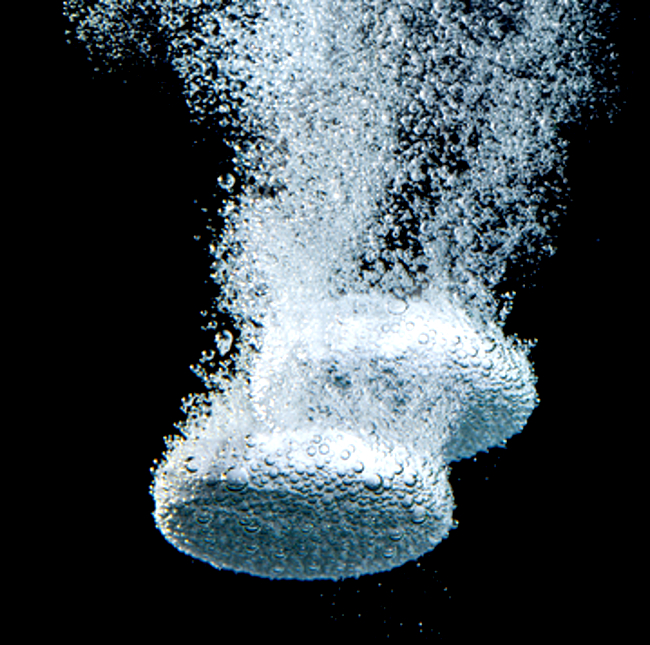
The RDA for Vitamin C is just 40mg and this is considered the minimum amount to prevent scurvy (the disease sailors used to get as a result of months of vitamin C deficiency), but it’s widely accepted that it’s not a toxic substance, so taking up to 1,000mg per day shouldn’t have any side effects. That said, why take 1,000mg per day when you only need 40?
It’s the human body’s enormous requirement for Vitamin C when it gets infected which is quite staggering. Most mammals are able to manufacture their own Vitamin C rapidly from glucose but humans can’t. Why this very useful biochemical pathway has evolved out of us as a species is not known, but for instance cats and dogs will manufacture their own Vitamin C at gram quantities when they get infected – probably why you never see your pet with cold!
When we become infected with a virus or bacteria, substances called ‘Free Oxygen Radicals’ are produced, often called ‘Free Radicals’ for short. In simple terms, free radicals are unbalanced atoms. A stable atom has an equal number of electrons surrounding it and can support biological functions, but an unbalanced atom will wreak havoc, attacking vulnerable cells and making them more susceptible to infection. According to Carr and Maggini (2017) Vitamin C works as an electron donor, providing the unbalanced atoms with the electron they are missing, stabilising them and increasing resistance to infection. Vitamin C is termed an ‘antioxidant’ for this reason, it reverses/prevents the oxidative damage caused by free radicals.
Where the studies/reviews into Vitamin C appear to be less flattering are in those which look at the nutrient as a preventative treatment – to stop you getting sick in the first place. There is little evidence to support consuming amounts above the RDA to ward off infection. Similarly, lower doses of the nutrient once infected are likely to have little effect because at this point the human body’s requirement is significant. They key to using vitamin C effectively appears to be to maintain high intakes (gram quantities) at the point of infection and this is called ‘Mega Dosing’.
Hickey and Roberts (2005) criticised the conclusions of many researchers over the last 60 years for not considering the pharmacokinetics of Vitamin C – the way the body reacts to a drug/nutrient, the time it takes to move through the body and it’s absorption/bioavailability. They suggest that small doses, in the 100’s of milligrams taken infrequently is like throwing stones at machine guns in the war against infection (our words, not theirs). Even mega doses taken infrequently will have limited effect, because of the speed at which the vitamin is used up at times of infection. The researchers suggest an extreme protocol involving a 10g (10,000mg) initial mega dose at the first sign of infection, followed by at least 2g (2,000mg) per hour thereafter.
Hickey and Roberts also suggest in the same review, when talking about an effective frequency for taking Vitamin C, that ingestion should be every 2-3 hours to maintain sufficient levels within the blood, but either way, the suggestion is to take a very high initial dose followed up by regular doses in gram quantities to keep concentrations high in the body. They also discuss a concept called ‘titration to bowel tolerance’ suggesting that as an infected body is so desperate for Vitamin C that the only way of knowing if you’ve had enough is to keep consuming it until it affects your bowels. A recognised side effect of overconsumption of Vitamin C is diarrhoea – their argument is that if you’re not infected, relatively small amounts of Vitamin C could cause this issue, because the body simply can’t use the nutrient and has to excrete it, but when infected the intake threshold is raised significantly.
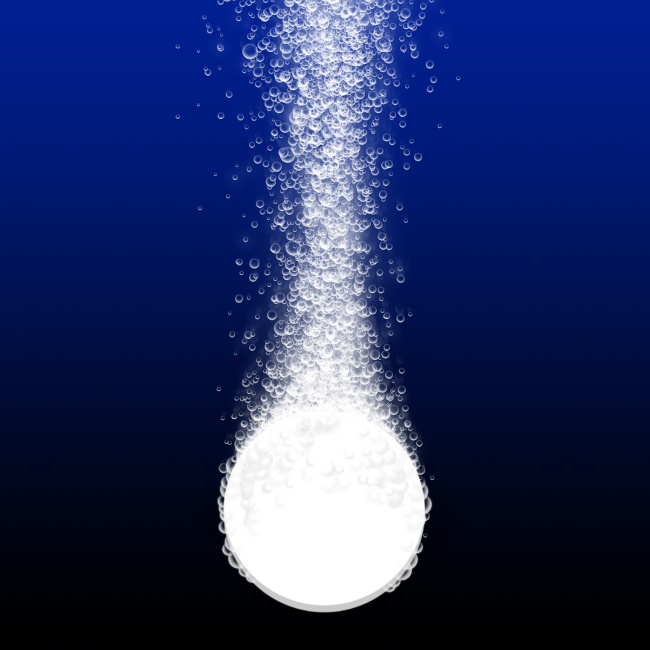
Gorton and Jarvis (1999) published a study addressing a mega dose protocol and the results were highly significant. Subjects consumed 1g (1,000mg) every hour for 6 hours at the onset of a viral infection, followed by 1g (1,000mg) 3 times per day. The results demonstrated an 85% reduction in cold/flu symptoms as a result. This was a notably lighter protocol than anything proposed by Hickey and Roberts, but still provided significant results.
We are entirely aligned with the concept of mega dosing at TORQ. If you’re not sick, let a healthy balanced diet supply the Vitamin C you need – an orange a day will do this easily. If you feel yourself coming down with something, at the first available opportunity you should follow a mega dosing protocol. Please refer to the final section of this resource entitled Conclusions & Recommendations where we incorporate Vitamin C mega dose supplementation into a comprehensive protocol for fighting infection.
Vitamin C and Covid-19: We must clarify that the Covid-19 pandemic is an ever-evolving situation and there is still much to understand about this virus. Although new evidence in emerging all the time, only the treatments that have been recognised by the MHRA as being effective against the disease should be relied upon at this stage. It is interesting to note however that most colds and flu infections come from different types of coronaviruses and that there is perhaps a logic to the notion that what has been proven to work for colds and flu may also apply to Covid19.
An article in March 2020 published on medicinenet.com discusses how the Department of Critical Care Medicine at Zhongnan Hospital of Wuhan Univerity, China have registered a clinical trial looking at the effects of mega dosing Vitamin C to the tune of 24g (24,000mg) per day for 7 days via an IV drip in the treatment of patients in a critical condition with Covid-19. The clinical trial background has been published HERE. In the article, Dr Cheng, the editor of the Orthomolecular News Service was interviewed and referred to the principle investigator of the clinical trial:
“…the principle investigator of the first high-dose IV vitamin C trial in China has told him (Dr Cheng) that the preliminary results of the study are promising. The investigator said the administration of 24 grams per day to COVID-19 patients leads to significant reductions in inflammation. Dr. Cheng said this is notable because massive inflammation in the lungs and potentially other organs may be fatal in the illness.”
And also:
“To the best of his knowledge, Dr. Cheng said the so-called “Shanghai Plan” published on March 1 (2020) is the first and only official government guideline for using vitamin C for something as serious as the novel coronavirus. He said there is a push to get additional Chinese hospital groups to study oral liposomal vitamin C for treatment of the virus because oral forms can be administered rapidly and widely to large numbers of affected patients.”
What isn’t clear and perhaps won’t be for some time is whether mega dosing orally with Vitamin C at an earlier point in the infection timeline could have prevented or reduced the chances of such a severe outcome for these patients.
More recently (December 2020) nutraingredients.com published an interesting article where they refer to about 350 leading researchers, doctors, healthcare professionals and nutritionists who have backed the VitaminC4Covid campaign in support of oral mega-dosing with Vitamin C or its use intravenously in intensive care to halt the onset of severe Covid19 symptoms. Their website criticises the suggestion that the use of Vitamin C in the fight against Covid19 is considered by many as being ‘fake information’.
Within the same article, the author quotes Patrick Holford, who established the Institute for Optimum Nutrition in 1984 with Nobel Prize-winning Vitamin C researcher Linus Pauling as saying:
“We’ve had 11 viral epidemics this century. The reality is there will be more. Vaccines, by their nature, are reactive. Vitamin C, together with Vitamin D and Zinc are proactive. Keeping one’s immune system strong is a critical part of any anti-viral strategy.”
We can provide insight into the latest research and what ‘might’ help you should you be unfortunate enough to contract Covid19, but ultimately you will have to draw your own conclusions from the information you digest from a variety of sources. Medical treatments have now been approved in the fight against the disease and at the time of writing, proven vaccines are also being rolled out across the country. Let’s hope that in the future, all we need to worry about are colds and flu and that if mutations of Covid19 do exist, more continues to be understood about their effective treatment.
L-GLutamine
We discussed Glutamine earlier and recommended it be taken post-exercise supplement to help maintain solid immune defences. There are actually 2 forms of Glutamine, L-Glutamine and D-Glutamine and there’s a consensus in the research that L-Glutamine is the substance that should be used – D-Glutamine doesn’t have the same function. We can’t think that anyone would be selling you D-Glutamine, but do check before purchasing.
Glutamine offers a range of potential benefits from assisting in muscle/strength gain through to improving intestinal health and fuelling the immune system. Studies are equivocal on the role of Glutamine in enhancing muscle/strength gain, but research by Legault et al (2015) does appear to back a reduction in muscle soreness and an improvement in post-exercise recovery. This coupled with evidence supporting its role within the immune system that lead us to including this conditionally essential amino acid in our TORQ Recovery Drink formulation.
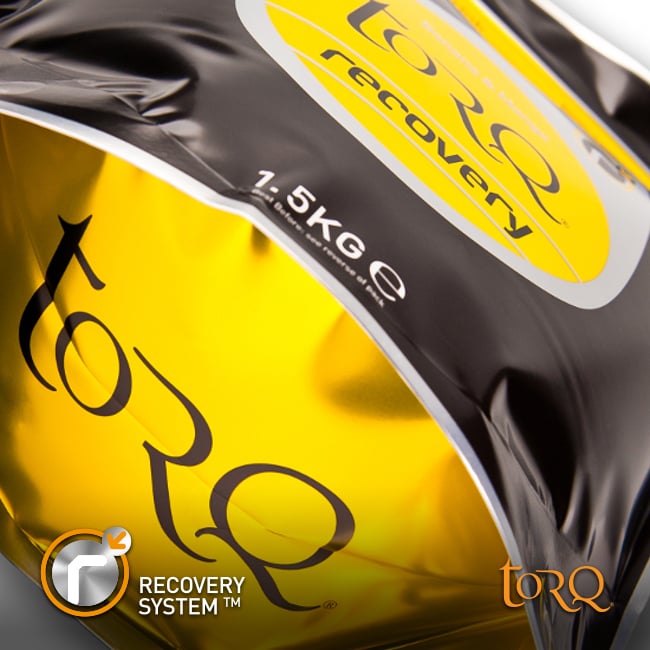
Our Recovery Drink aside, can supplementing with pure Glutamine work alongside Vitamin C to help you fight an infection once you know you’re sick? There is no doubt that Glutamine plays a critical role in fuelling the white blood cells to assist the immune system in fighting infection. There are theoretical arguments however that as Glutamine is so abundantly available in the human body – if not consumed in your diet, it can be released by breaking down muscle tissue – that a Glutamine supplement as such wouldn’t be beneficial. This is countered by a study by Ren et al (2013) which suggests that supplementing increases available Glutamine for the immune system to use as a fuel and helps to fight infection due to skeletal muscle not being able to generate sufficient concentrations. Certainly it would make sense that if your particular illness is suppressing your appetite, the value of supplementary Glutamine becomes clearer. Also, since many of our readers are athletes, does the prospect of breaking down hard-earned muscle mass to fight an infection at a metabolic cost to your body sound desirable? The other area to consider, which was discussed earlier in the section Fuelling, Recovery & Immunity is that if you have been under a heavy exercise load, your Glutamine baseline levels will be suppressed – again justification for supplementing at this critical time.
What we have found particularly interesting whilst researching this area is the positive interplay that exists between Vitamin C and Glutamine supplementation. Glutamine fuels the white blood cells of the immune system to assist them in fighting infection, whilst Vitamin C stabilises and strengthens the integrity of all the cells in your body increasing their resistance to infection. It sounds like the perfect combination to us.
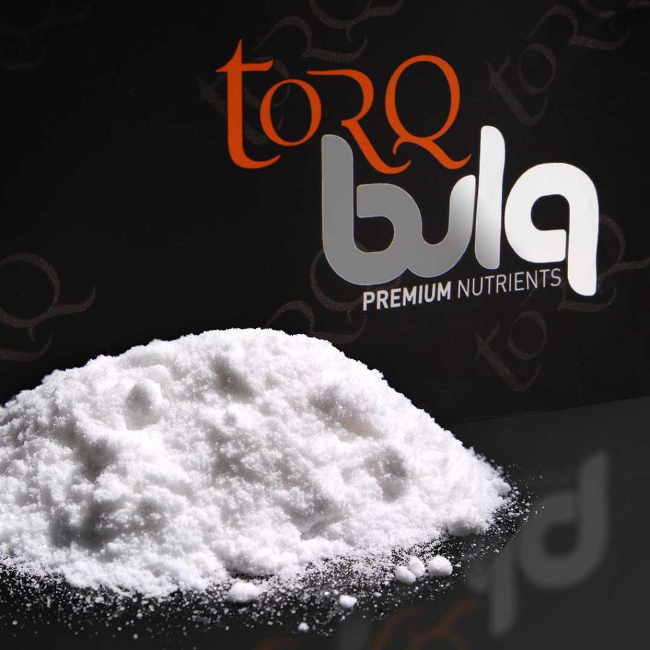
In terms of dose, you’re probably getting between 3 and 6 grams of Glutamine per day in your diet and a review by Gleeson (2008) suggests that one can consume up to 30g per day over 14 days without any ill effects, but at these levels you’re likely just to be wasting your money. In the context of supporting your immune system at a time of infection, when your general day-to-day nutrition is suppressed, a 10-15g daily amount, split over 3 servings or more (morning, midday and evening) would seem a reasonable protocol to us. Please refer to the final section of this resource entitled Conclusions & Recommendations where we incorporate Glutamine supplementation into a comprehensive protocol for fighting infection.
Echinacea
Echinacea is a plant (part of the daisy family) native to North America and the 3 varieties used in Echinacea supplements are Echinacea Purpurea, Echinacea Angustifolia and Echinacea Pallida. There are a variety of health claims linked to Echinacea, but the one we’re interested in is the prevention and/or treatment of colds and flu.

According to David & Cunningham (2019), as more athletes aim to support their physical training with a healthy and most importantly, natural diet, the search for natural remedies to support immunity is on the rise. Echinacea has been shown to support immunity via the increase in effectiveness of the mucosal barrier, the first line of defence against pathogens entering the body, whilst Echinacea may also increase the activation of cytokines and lymphocytes which are key to the white blood cells capacity to attack illness circulating throughout the body (Hall et, al. 2007).
One of the most interesting findings from the Hall et, al. 2007 research cohort, demonstrated that although the number of cold and flu infections between the control group and Echinacea group were similar, the duration of the illness was significantly reduced from 8.6 days to 3.4 respectively. This of course has significant importance for athletes who are aiming to train and peak for an event. Every day training lost through illness, is a day of potential training adaptation lost. The graph below illustrates the findings.
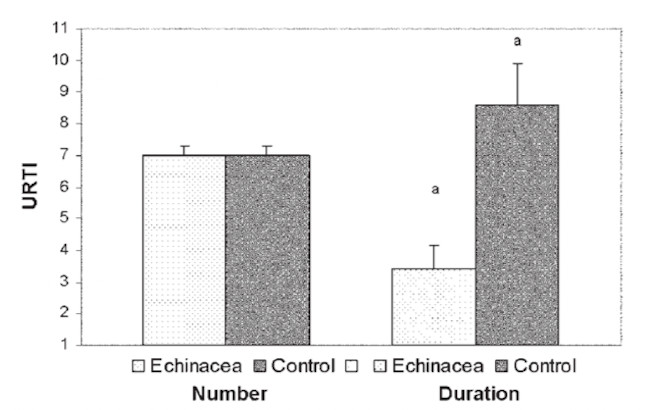
However, the effectiveness of Echinacea stems further than just treatment. Research has also aimed to explore the effectiveness of echinacea on the prevention of the common cold. Schoop and colleagues, explored the effectiveness of echinacea on the prevention of symptom development after participants of a controlled study, were inoculated with a common rhinovirus. Analysis of this paper established that those who did not supplement with Echinacea were at a 55% greater risk of developing symptoms of the clinically controlled, inoculated rhinovirus. This is important to the context of a training athlete, as this would suggest that with supplementation of Echinacea, an athlete would be greater protected against illness and therefore maintain an over-all greater training load, leading to enhanced adaptation. The implication is that supplementing with Echinacea may be useful at times when the body is more susceptible to infection – during high load training cycles when immunity may be suppressed or whilst travelling, particularly on aeroplanes where the chances of meeting a pathogen are increased.
The NHS website seems to sum Echinacea up pretty well and provides the kind of balance a thorough review of the research literature reflects. We have referenced 3 studies/review papers in the ‘references’ section of this resource, but read the following link if you would like further information:
https://www.nhs.uk/news/lifestyle-and-exercise/echinacea-cold-study-claims-analysed
This article supports the assertion that Echinacea supplementation may reduce the severity and duration of a cold/flu if taken at the point of infection. Interestingly, the benefits seem to lie in Echinacea’s antioxidant properties, so it may work in a similar way to Vitamin C by stabilising cells through free radical neutralisation, making them more resistant to infection. Overall, although the research doesn’t seem anything like as convincing as mega dosing with gram quantities of Vitamin C, we certainly wouldn’t write Echinacea off if used in combination with a Vitamin C mega dose and Glutamine, the overall benefit being a sum of the parts.
In terms of dose, the research reviewed by the NHS looked at 4,000mg (4grams) per day starting at the point of infection. This could be taken as 4 X 1,000mg doses or 8 X 500mg doses. For maximum effect, we wouldn’t recommend taking the entire daily dose of 4,000mg in one hit.
Although research exploring Echinacea is constantly evolving, the factors considered above indicate that there are a number of immunological benefits to supplementing with Echinacea, from both a prevention and cure perspective. Most importantly Echinacea does not lend any adverse side-affects that some pharmaceutically engineered drugs may present on training or adaptation responses.
Please refer to the final section of this resource entitled Conclusions & Recommendations where we incorporate Echinacea supplementation into a comprehensive protocol for fighting infection.
If you’re interested in learning more about Echinacea, read our article Echinacea: Immunity, Health & Performance.
As previously mentioned, these resources were researched and written in April/May 2020 and in January 2021 we launched our Immune System Support products off the back of the information we had gleaned. It’s important for you as a reader to understand that this is how TORQ has worked throughout its history. We do not copy others, we consult the research, review it thoroughly and if we feel there is a need for a product, we produce it to the highest possible standard. Our TORQ aTAC product provides research-recommended doses of Vitamin C, Glutamine and Echinacea through a mega-dosing protocol inspired by the studies we refer to in the tabs above. For further details or to purchase TORQ aTAC, click HERE.






